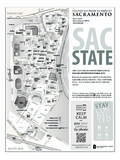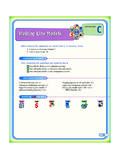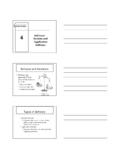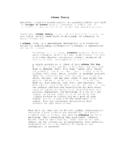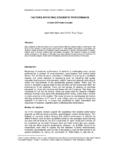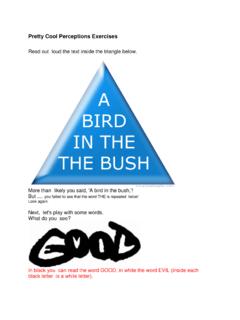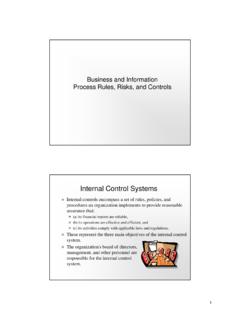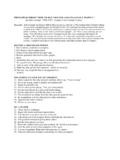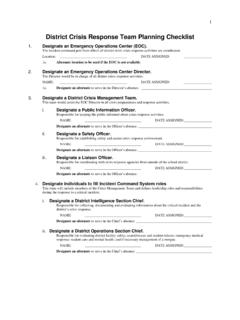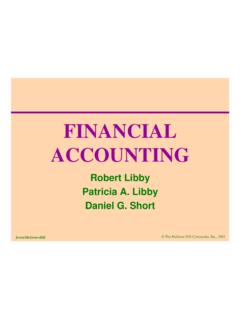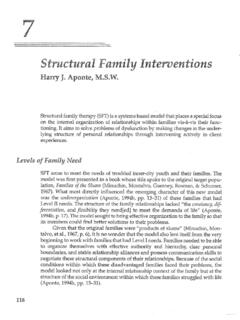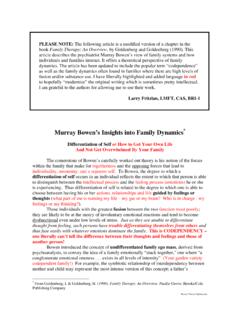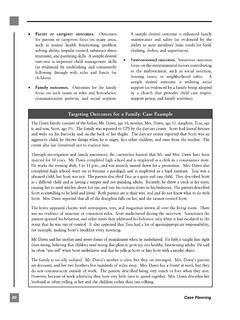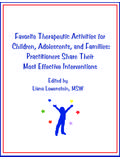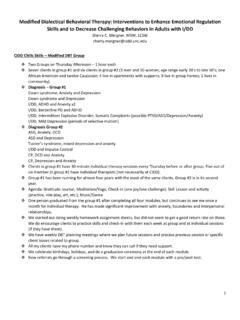Transcription of SOCIAL SKILLS: INTERVENTIONS FOR STUDENTS WITH …
1 SOCIAL SKILLS: INTERVENTIONS FOR STUDENTS WITH EMOTIONAL AND BEHAVIORAL DISORDERSP resented by:Luke AndersonTiffany GoodsonRenee RodriguezSOCIAL SKILLS DEFINED SOCIAL skills are the specific behaviors when interacting with others. SOCIAL skill deficiency is a defining characteristic of emotional and behavioral disorders.(Bullis et al., 2001) SOCIAL SKILLS DEFINED Disorders that show an impairment in SOCIAL skills:|Conduct Problems|Mood Disorders|Anxiety Disorders|Autism Spectrum Disorders|Attention-Deficit/Hyperactivit y Disorder (AD/HD)|Learning Disabilities(Rutherford et al., 2004)EXAMPLESOF ANTISOCIAL BEHAVIORS(Mash & Wolfe, 2002)RISK FACTORS GENETICS|Twin studies show that a disposition to become anxious is inherited|Studies also show children may inherit a vulnerability for depression|1/3 of immediate and extended family members of children with AD/HD are also likely to have symptoms|A major cause of autism is biologically based neurodevelopmental disorders|Subtle inherited brain dysfunctions can lead to learning disorders(Mash & Wolfe, 2002)RISK FACTORS GENETICS|Children with conduct problems show lower verbal IQ than performance IQyA specific and pervasive language deficit may affect receptive listening, reading, problem solving, expressive speech and writing, or memory for verbal materialyThese deficits may in turn interfere with development of self-control or an ability to label emotions in others, which may lead to a lack of empathy(Mash & Wolfe, 2002)
2 RISK FACTORS PERSONALITY|Early difficult temperament puts children at risk of developing later conduct problems|Shy-inhibited temperament is a risk factor for anxiety|Children with deficient emotional regulation are at risk for developing depression(Mash & Wolfe, 2002)RISK FACTORS family ENVIRONMENT| family problems are among the strongest and most consistent correlates of antisocial behavior|Types of family risk factors:yGeneral family disturbancesySpecific disturbances in parenting practices and family functioningyBoth are highly interrelatedyLow SES increases risk(Mash & Wolfe, 2002)RISK FACTORS ADOLESCENCE|Cognitive CharacteristicsyFormal operational thought processes including hypothetical thoughts and ability to analyze possibilitiesySelf-awareness including tendencies toward egocentrismyBelief in invincibility fable and imaginary audience|Influence of peers on increase of antisocial behaviorsy52% of 8thgraders and 80% of high school seniors have drunk alcoholy44% of 8thgraders and 66% of high school seniors have smoked a cigarettey22% of 8thgraders have tried marijuana, 41% of high school seniors have tried at least one illegal drugy2/3 of all recorded youth offenses were committed with 2-3 peers(Berger, 2001.)
3 Mash & Wolfe, 2002)RISK FACTORS ADOLESCENCEI ncreased risk for mental health disordersDisorderPrevalenceAverage OnsetAnorexia nervosa yearsBulimia1-3%late adolescenceAdolescent-Limited Conduct Disorder2-6%peaks at 17 yearsGeneralized Anxiety Disorder 3-6%10-14 yearsDepression20%15-19 yearsSuicide Attempts30% of those with depressionfirst attempt: 13-14 years(Mash & Wolfe, 2002)POSSIBLE OUTCOMES OF SOCIAL SKILL DEFICIENCIES| STUDENTS who are lacking SOCIAL skills are at risk for:yAggression yPeer rejection yLonelinessySocial dissatisfactionyAcademic failureySchool drop-outyContact with the legal systemySubstance abuseyDifficulty maintaining employment and relationships(Maag, 2006; Rutherford, et al., 2004) SOCIAL SKILL INTERVENTIONS | SOCIAL skill instruction should be a componentof a group of INTERVENTIONS for STUDENTS who exhibit internalizing and externalizing behaviorsyBehavior INTERVENTIONS |Primary (Whole School)|Secondary (Group)|Tertiary (Function Based)yCognitive-Behavioral Therapy yInterpersonal TherapyyMedical InterventionsyGroup and Individual Counseling(Bullis et al.
4 , 2001) SOCIAL SKILL INSTRUCTION PROGRAMSSOCIAL SKILL INSTRUCTION RATING SCALES AND ASSESSMENTS|Behavioral and Emotional Rating Scale, Second Edition (BERS-2) y(Epstein)| SOCIAL Skills Rating System (SSRS)y(Gresham and Elliot)|SkillStreamingy(McGinnis and Goldstein) SOCIAL SKILL INSTRUCTION WHAT TO INCLUDE|The Steps Involved Vary Depending on the Program| SOCIAL Skill Instruction may include:yDefinition and Guided InstructionyIdentifying Situations when the Skill may be usedyBoth Positive and Negative Examples (Modeling)yRole PlayingyPerformance Feedback and Reinforcement for Skill useyStrategies for Transfer| SOCIAL Skill Instruction in high school should include job related SOCIAL skills(Bullis, 2001; Rutherford, et al., 2004) SOCIAL SKILL INSTRUCTION TRANSFER AND SELF MONITORING|Transfer of SOCIAL Skills does not always occuryMultiple periods in middle school/high school may make transfer more problematic (Rutherford, et al.
5 , 2004)|Self Monitoring ySelf monitoring of SOCIAL skill use may be a viable intervention in middle school and high school|Research supports the use of self monitoring with teacher matching for middle school STUDENTS (Lloyd et al., 2006) SOCIAL SKILL INSTRUCTION EFFECTS|Effects of SOCIAL Skill InstructionyPower Ratings|Prosocial Behavior = Small|Problem Behavior = Small|Specific Behaviors|Anxiety = Medium|Adjustment = Small|Cooperation = Small|Interaction = Small|Self-Concept = Small|Aggression = Small(Rutherford, et al., 2004)VIDEO EXAMPLE|The child in this video is listing several examples of antisocial behaviors|He is also demonstrating a teacher s attempt at using the operant conditioning principal of positive punishment|The punishment is ineffective. This child may benefit from SOCIAL skill instruction| +simpson&total=366&start=0&num=10&so=0&t ype=search&plindex=0 REFERENCESB erger, (2001). The developing person through the life span.
6 New York, NY: Worth , , Walker, , & Sprague, (2001). A promise unfulfilled: SOCIAL skills training with at-risk and antisocial children and youth. Exceptionality, 9 (1 & 2), , , Garber, J., Ciesla, , Young, , & Mufson, L. (2007). Prevention of depressive symptoms in adolescents: A randomized trial of cognitive-behavioral and interpersonal prevention programs. Journal of Consulting and Clinical Psychology, 75(5), , (2006). SOCIAL skills training for STUDENTS with emotional and behavioral disorders: A review of reviews. Behavioral Disorders, 32 (1), , & Wolfe, (2002). Abnormal child psychology (2nd ed.). Belmont, CA: , , Young, , Salzberg, , West, , & Hill, M. (2006). Using Self-management procedures to improve classroom SOCIAL skills in multiple general education settings. Education and Treatment of Children, 29, (1), , , Quinn, , & Mathur, (2004). Handbook of Research in Emotional and Behavioral Disorders.
7 New York, NY: The Guilford Press.
